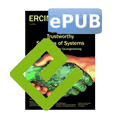by Kaveri Bhuyan and Kjetil Uhlen
To meet the future challenges for sustainable energy systems, the operation and control of smart grids will require a System of Systems (SoS) approach, which takes into account the combined complexities of power grids and Information and Communication Technology (ICT) infrastructures. This encompasses a Wide Area Monitoring Systems (WAMS) approach. The basic building block of WAMS is the Phasor Measurement Units (PMUs). Based on wide area information from PMU, it is possible to monitor and observe the state of the power system in real-time. Applications utilizing PMU measurements are being developed for secure operation of power systems.
The smart grid is a complex system consisting of interdependent power grid and ICT components. This complex network is called cyber-physical system or system of systems (SoS) [1]. WAMS approach for monitoring, protection and control can help to address the future challenges in sustainable smart grid-based energy systems. The main purpose of WAMS is to improve the monitoring and observability of the power grid. WAMS will enable intelligent monitoring, protection and control of power systems using ICT.
PMUs have been extensively installed and used in many countries to stimulate development of WAMS. Our research activity concentrates on developing application of wide area information obtained from PMUs for monitoring, protection and control in smart grids. PMU measures time synchronized voltage and current phasors at any location in the power system through Global Positioning System (GPS) time stamping. The PMU measurements are collected, processed or stored in Phasor Data Concentrators (PDCs) for further use in protection and control systems. PMUs have high measurement frequency and the challenge is to secure and manage the enormous amounts of data that are available from the measurements. These aspects constitute vulnerabilities and call for robust ICT solutions and strong power grid considering interdependencies and interoperability. Thus, WAMS has to be able to provide more accurate, fast and reliable information for initiating control actions. Figure 1 shows the layout of a simple WAMS architecture [2]. It primarily consists of PMUs, PDCs, and PMU-based application systems.
![Figure 1: Basic layout of wide area monitoring systems [2] Figure 1: Basic layout of wide area monitoring systems [2]](/images/stories/EN102/bhuyan.png)
Figure 1: Basic layout of wide area monitoring systems [2]
State estimation is a key function in power system planning, operation and control [3]. Time synchronized PMU measurements at different locations makes it possible to have state estimates that can be utilized for control purposes in power systems. With the availability of phasor measurements, it is easier to obtain optimized power flow solutions, security/stability assessment enabling flexible operation of the system closer to its stability limit. As part of our research, we plan to develop formal methods to extract useful information - e.g. to help anticipate whether an operating point is potentially vulnerable (e.g. resulting in a voltage collapse or poorly damped inter-area oscillations). The PMUs are installed in the Smart Grid/ Renewable Energy Laboratory at Norwegian University of Science and Technology, Trondheim, Norway. The data regarding system frequency, power oscillation and voltage stability obtained from the PMU measurements at multiple locations could be used to identify possible vulnerabilities in the test system. The primary objective of our work is to develop, demonstrate and validate smart and robust solutions for power system operation and control in smart grids using PMUs. The eventual goal is to develop methods to extract and aggregate useful information from PMU data for power system state estimation to increase situational awareness, identify and analyze cyber-physical system vulnerabilities in real-time. The next-generation monitoring, and control centre will use PMU data to assess available transfer margins across transmission corridors, provide corrective actions to prevent cascading failures and blackouts, provide probabilistic risk assessment for N-x contingencies, and automatic protection and restoration.
References:
[1] J. Wäfler, P.E. Heegaard: “Interdependency modeling in smart grid and the influence of ICT on dependability”, Adv Commun Networking, pp. 185–196, 2013.
[2] M. Chenine, et al.: “Implementation of an experimental wide-area monitoring platform for development of synchronized phasor measurement applications”, IEEE Power and Energy Society General Meeting, pp.1-8, July 2011.
[3] Y.-F. Huang, et al.: “State estimation in electric power grids: Meeting new challenges presented by the requirements of the future grid,” IEEE Signal Process. Mag., vol. 29, no. 5, pp. 33–43, Sept. 2012.
Please contact:
Kjetil Uhlen
NTNU, Norway
E-mail:
Kaveri Bhuyan
Post-doctorate researcher (ERCIM fellow)
NTNU, Norway
E-mail:











